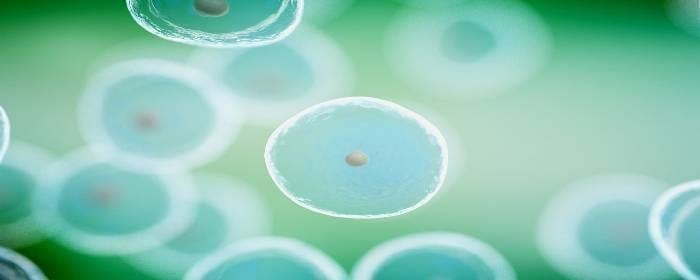
by admin | Mar 5, 2020 | Hair Regrowth
Androgenic alopecia, more commonly known as pattern hair loss or pattern baldness, is an extremely common form of hair loss. Four out of 5 men and 2 out of 5 women under the age of 70 have hair loss due to androgenic alopecia (aka androgenetic alopecia). While this form of hair loss is not deadly, or even dangerous, it can cause substantial amounts of personal suffering, low self-esteem, and diminished quality of life. Indeed, most people with androgenic alopecia or pattern hair loss would much rather stop their hair loss and cure their baldness. Here we talk about stem cell therapy for hair loss.
Unfortunately, there are few effective treatments for androgenic alopecia. Patients may choose to use topical medication, minoxidil. Men can use the drug finasteride. Neither of these agents is very effective for many people who try them. Some patients with pattern baldness opt for surgery. Surgical hair loss treatment can be helpful for men who have receding hairlines, but it is of little to no use in patients with diffusely thinning hair, which is most often the case in women affected by androgenic alopecia.
Scientists have turned to stem cell therapy for hair loss for a few reasons. First, the current medical and surgical treatment options are largely ineffective. Second, stem cell treatment has been shown to be safe in many scientific and clinical studies. Third and perhaps most importantly, androgenic alopecia is caused, in part, by problems with natural stem cell function. Immune cells (lymphocytes and mast cells) can be found in the area around each hair follicle, specifically in the “knot zone” which is where most hair follicle stem cells reside. These immune cells and hormonal factors likely interfere with hair follicle stem cell function—the number of hair follicle stem cells stays the same in pattern baldness, but the ability of progenitor cells to multiply is greatly reduced. Natural stem cells in people with androgenic alopecia do not produce the same levels of substances that support hair growth and renewal. In short, patients with pattern baldness may benefit from stem cell treatment.
Researchers are strenuously pursuing this line of research. One promising approach is to apply stem cells (fat and stromal vascular fraction cells) directly to the balding areas of the scalp. For example, Dr. Shin and colleagues used stem cells on 27 women with pattern baldness and showed increased hair thickness and density 12 weeks after treatment. Another approach is to use exosomes from these stem cells to treat hair loss. Exosomes are released by stem cells, contain virtually all the beneficial molecules that stem cells produce and can be applied to the scalp without surgery.
The field of stem
cell treatment for pattern hair loss is growing rapidly. As more clinical
trials are published, we move closer to a time in with stem cell and stem cell
exosome treatment for androgenic alopecia becomes a reality.

by admin | Oct 18, 2019 | Adipose, Erectile Dysfunction, Stem Cell Research, Stem Cell Therapy
Prostate cancer is quite common among men in the United States. The main treatment options for prostate cancer include:
- External beam radiation – Radiation is applied to the prostate gland through the skin (noninvasive)
- Brachytherapy – Radioactive pellets the size of grains of rice are placed within the prostate gland (invasive)
- Radical prostatectomy – The entire prostate gland and some surrounding tissue is removed
About one-quarter of all men with prostate cancer ultimately choose to have a radical prostatectomy. Unfortunately, this procedure often leaves men with chronic problems afterward, such as urinary incontinence (i.e., the inability to hold or control urine) and erectile dysfunction (i.e., the inability to achieve and maintain a penile erection suitable for sexual intercourse). Almost 90% of men who undergo radical prostatectomy to treat prostate cancer develop erectile dysfunction. Drugs and penile injections are not always effective in treating this type of erectile dysfunction. Consequently, as many as three-quarters of men must live with permanent erectile dysfunction. While prostate cancer is essentially cured after radical prostatectomy, affected men have substantially worse quality of life, which also negatively affects their sexual partners.
In an effort to combat this difficult problem, researchers conducted a Phase 1 clinical trial in which they took stem cells from the patient’s own fat tissue (autologous stem cells), purified them, and injected them into the penile tissue of radical prostatectomy patients with erectile dysfunction. Eight of the 17 men who volunteered for the clinical trial regained erectile function and were able to engage in sexual intercourse after just one stem cell injection.
Importantly, stem cell treatment was only effective for men who had not developed urinary incontinence. Eight of 11 men who still could control their urine after radical prostatectomy regained their ability to achieve and maintain erections. Conversely, no man with urinary incontinence after radical prostatectomy had erectile function restored.
The researchers noted that the stem cell treatment was very well tolerated by all men, and described the procedure as safe.
While larger clinical trials are needed to confirm these results, autologous stem cells taken from a patient’s own fat tissue were able to restore erectile function in most of the men treated. This research suggests that men who do not lose urinary function may benefit from this procedure. On the other hand, men who become incontinent after radical prostatectomy may not benefit from this particular stem cell therapy. Randomized, placebo-controlled clinical trials will help clarify this issue. In the meantime, these results are encouraging news to thousands of men who suffer from permanent erectile dysfunction as a result of their radical prostatectomies.
Reference: Haahr, MK et al. (2016). Safety and Potential Effect of a Single Intracavernous Injection of Autologous Adipose-Derived Regenerative Cells in Patients with Erectile Dysfunction Following Radical Prostatectomy: An Open-Label Phase I Clinical Trial. EBioMedicine. 2016 Jan 19;5:204-10.

by admin | Oct 3, 2019 | Exosomes, Stem Cell Therapy
Much of the medical research and clinical applications of stem cell therapy have thus far focused on stem cells and their potential to repair damaged or diseased tissue that has not responded to conventional therapies. Though there has been a lot of evidence to suggest that the use of certain types of stem cells can be safe, experts have suggested that strategies for therapy using exosomes that can avoid the use of living stem cells may provide an even better opportunity to slow the progression of various diseases.
Paracrine secretions have been shown to play a significant role in the ability of stem cells to improve disease conditions, and exosomes are a key element of these secretions. From a functional standpoint, exosomes enable stem cells to transfer their genetic information to other cells residing in the damaged tissue.
Because these are responsible for some of the critical benefits of stem cells, researchers have speculated that the use of exosomes rather than stem cells may provide specific advantages in some therapeutic contexts. A review in Stem Cells International has provided a comprehensive overview of what is known so far about the potential role of exosomes in stem cell therapy.
Exosomes are released from a wide variety of stem cell types and influence the functioning of nearby cells and tissues. Their use alone may offer better therapeutic results. Indeed, they have shown particular promise in addressing symptoms of many conditions.
Researchers are hopeful that exosomes will be able to help patients in new and innovative ways, more research is needed to determine the best way to apply them in stem cell therapy.
Reference: Han, C. et al. (2016). Exosomes and their therapeutic potentials of stem cells. Stem Cells International, 1-11.

by admin | Aug 22, 2019 | Erectile Dysfunction, Stem Cell Therapy
The little blue pill brought erectile dysfunction from out of the shadows and into our shared awareness. Erectile dysfunction affects millions of men and, in turn, their sexual partners. The condition can undermine a man’s sense of self-worth, self-esteem, and masculinity. While the little blue pill has been instrumental in getting men with erectile dysfunction to ask their doctors about treatment, that same pill does not work for every man. Indeed, countless men fail to achieve successful erections even after taking oral erectile dysfunction medication.
In one of the first clinical studies of its kind, urologists at a medical practice in Florida tested the effects of mesenchymal stem cell treatments in men with erectile dysfunction. They selected eight men with erectile dysfunction who could not achieve erections even after oral medications. The men received mesenchymal stem cells that were derived from human placenta (also known as afterbirth). The urologists then followed the men for six months after treatment, testing blood flow, penile size, and erectile function.
The men treated with mesenchymal stem cells had a statistically significant increase in penile blood flow at six weeks, three months, and six months after treatment. Three men were able to achieve erections within three months of treatment without oral erectile dysfunction medication. After stem cell treatment, four other men were able to achieve erections with low-dose oral erectile dysfunction medication (which had previously been ineffective).
Importantly, the treatment was well-tolerated by all men in the study, which is an important milestone for continuing this research.
The study is potentially groundbreaking as it opens the door to larger clinical studies in men with erectile dysfunction. Indeed, nearly two dozen clinical trials are now studying the effects of stem cell treatment for erectile dysfunction. These early results are exciting, and offer hope to men with erectile dysfunction, especially those for whom oral medications have failed.
Reference: Levy, JA (2016). Determining the Feasibility of Managing Erectile Dysfunction in Humans With Placental-Derived Stem Cells. The Journal of the American Osteopathic Association. 2016 Jan;116(1):e1-5.

by admin | Jun 25, 2019 | Stem Cell Research
Men with erectile dysfunction cannot achieve or maintain an erection suitable for sexual intercourse. Erectile dysfunction can be devastating for the men who suffer from it, putting a strain on intimate relationships, and causing significant emotional suffering. Sadly, half of all men between the age of 40 and 70 experience some degree of erectile dysfunction. Fifteen percent of men are completely impotent, and many men do not respond to typical treatments.
Many men with erectile dysfunction can be successfully treated with phosphodiesterase type-5 inhibitors such as Viagra or Cialis. These pills can be taken daily or as needed to allow men to achieve erections when desired. However, these medications have some significant side effects. For example, these drugs can cause an unsafe drop in blood pressure, especially in people who are taking nitrate medications for heart and cardiovascular diseases. Likewise, these drugs can be expensive, since they are not always covered by insurance programs.
It also should be pointed out, that not all men find success from these erectile dysfunction drugs and must turn to penile injections. Penile injections are particularly inconvenient because an injection must be performed prior to each sexual encounter.
Since most men who suffer from erectile dysfunction have problems with the blood vessel system that makes erections possible, scientists have been investigating the possibility of using stem cells to help regenerate and regrow the cells in that system. While there have only been a handful of clinical trials using stem cells to treat erectile dysfunction, the results are promising.
Bahk and co-authors used umbilical cord stem cells to treat seven men with erectile dysfunction related to their type 2 diabetes. Almost all of the men who received a penile injection of stem cells experienced a return of morning erections and reported an increase in penile hardness. This effect lasted for at least three months after the injection.
Another research group tested adipose (fat tissue) stem cells in men who had erectile dysfunction due to prostate removal surgery. Some of these men also lost their ability to control urine (i.e. urinary incontinence). Eight of 17 men in the trial recovered erectile function. Interestingly, the incontinent men were the ones I the group of 17 who failed to achieve a benefit from stem cell injections.
Lastly, researchers tested stem cells taken from placental tissues (not embryonic stem cells) in men with erectile dysfunction of unknown cause. Men who were treated with stem cells enjoyed a significant increase in blood flow and blood pressure to the penile area. Likewise, several men regained the ability to achieve and sustain erections even though they had been completely impotent before the treatment.
While this research is ongoing, these results are incredibly encouraging for men (and their partners) who struggle with erectile dysfunction. The benefits of stem cells are particularly relevant for men who do not receive any or complete improvement in erectile dysfunction from ED medications. While these treatments do require a penile injection, the effects tend to last much longer than current, non-stem cell penile injections (three months or longer), which is an important innovation and makes treatment far more convenient for patients.






 St. Petersburg, Florida
St. Petersburg, Florida
